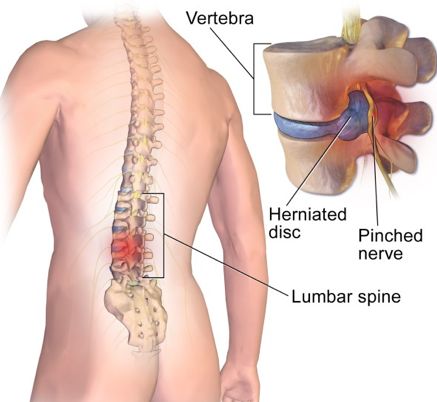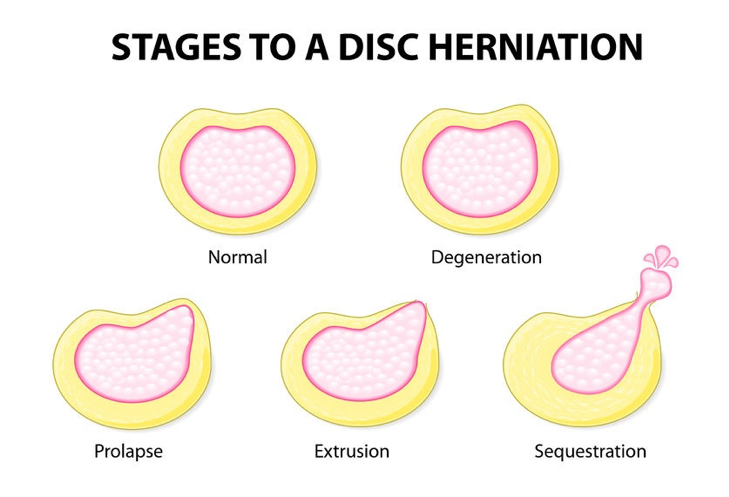
Disc Herniation Part 1 – What is a slipped disc?
[fusion_builder_container admin_label=”” hundred_percent=”no” equal_height_columns=”no” menu_anchor=”” hide_on_mobile=”small-visibility,medium-visibility,large-visibility” class=”” id=”” background_color=”” background_image=”” background_position=”center center” background_repeat=”no-repeat” fade=”no” background_parallax=”none” enable_mobile=”no” parallax_speed=”0.3″ video_mp4=”” video_webm=”” video_ogv=”” video_url=”” video_aspect_ratio=”16:9″ video_loop=”yes” video_mute=”yes” video_preview_image=”” border_size=”” border_color=”” border_style=”solid” margin_top=”” margin_bottom=”” padding_top=”” padding_right=”” padding_bottom=”” padding_left=””][fusion_builder_row][fusion_builder_column type=”1_1″ layout=”1_1″ spacing=”yes” center_content=”no” hover_type=”none” link=”” min_height=”” hide_on_mobile=”small-visibility,medium-visibility,large-visibility” class=”” id=”” background_color=”” background_image=”” background_position=”left top” undefined=”” background_repeat=”no-repeat” border_size=”” border_color=”” border_style=”solid” border_position=”all” padding=”” margin_top=”0px” margin_bottom=”0px” animation_type=”” animation_direction=”left” animation_speed=”0.3″ animation_offset=”” last=”no”][fusion_text]
We often have patients that visit our clinic and say, “I think I have a slipped disc”, however not many fully understand what a slipped disc is and how it can affect the body. This article will share with you the important details you will need to know if you think you may have a slipped disc.

What is a slipped disc?
A slipped disc occurs when there are tears on the outer fibrous layers of the disc, allowing the gel-like material (nucleus pulposus) within the disc to ‘slip’ (push out) of the disc. However, the extent of a ‘slipped disc’ may vary in severity.

If the disc material has moved out of its original position and shape but some of the outer layers of the disc are still intact (partial tear) and are able to contain the nucleus pulposus, it is known as a disc prolapse (also known as, disc bulge).
However, if a particular region of the outer layers of a disc has completely torn and the disc material (nucleus pulposus) has begun to project out of the disc, it is known as a disc extrusion.
Lastly, if the outer fibrous layers of the disc have completely torn, the disc material has projected out of the disc and the material (nucleus pulposus) begins to travel to different positions and levels outside of the disc region, it is known as a disc sequestration.
How does it happen?
Slipped disc can occur due to trauma or degeneration over a long period of time (wear and tear).
Usually in the case of trauma, an activity causing excessive rotation and axial loading on the lower back causes damage to the disc. This is because of the way the outer layers of the disc (annulus fibrosus) are built, which makes it prone to injury when put under a rotational force. Coupled with carrying the weight of our body and with external load, additional stress is caused to the disc.

Whereas, for ‘degeneration’ the fibrous tissue that make up the disc slowly experience wear and tear over a period of time. The healing process is no longer occurring as rapidly as the breaking down process, causing injuries to accumulate.
These conditions cause the outer (annulus fibre) of the discs to tear, allowing the gel-like material (nucleus pulposus) in the disc to project and protrude out of the disc space.
To learn more on how to know if you may have slipped disc, head over to the second part of this article. Here at Healthworks, we often see clients that are diagnosed with a slipped disc. With the use of our integrative healthcare services, we do our best to help clients achieve pain relief, have better joint movements and have a more active lifestyle.
Drop in and see us… don’t let the condition get the best out of you – ensure that you get the best out of life!
[/fusion_text][/fusion_builder_column][/fusion_builder_row][/fusion_builder_container][fusion_builder_container hundred_percent=”no” equal_height_columns=”no” menu_anchor=”” hide_on_mobile=”small-visibility,medium-visibility,large-visibility” class=”” id=”” background_color=”” background_image=”” background_position=”center center” background_repeat=”no-repeat” fade=”no” background_parallax=”none” parallax_speed=”0.3″ video_mp4=”” video_webm=”” video_ogv=”” video_url=”” video_aspect_ratio=”16:9″ video_loop=”yes” video_mute=”yes” overlay_color=”” video_preview_image=”” border_size=”” border_color=”” border_style=”solid” padding_top=”” padding_bottom=”” padding_left=”” padding_right=””][fusion_builder_row][/fusion_builder_row][/fusion_builder_container]
